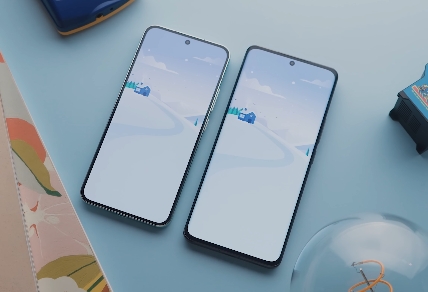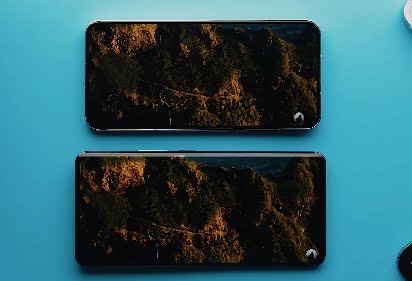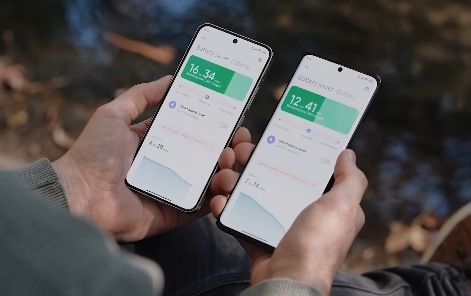The Xiaomi 13 vs Xiaomi 13 Pro, and I’ve been using both phones interchangeably as my main everyday phone for the past month, and they’re both pretty compelling options. but with a roughly $300 price difference between these two phones, the question really becomes, What do you get in this pro model that justifies that price jump? And that’s exactly what we aim to answer in this head-to-head comparison article, so let’s dive in.
The Similarities Between Xiaomi 13 and 13 Pro

Differences between these two phones, let’s start by talking about what’s the same. So both phones have a bright 120 hertz display with a max brightness of 1200 nits when high brightness mode is activated and a peak brightness of 1900 nits for viewing HDR content, and then both phones have an IP68 dust and water resistance rating. They’re both made of premium glass and metal materials and feel super sturdy and well built in terms of specs. Xiaomi 13 and 13 Pro Both phones use the same Snapdragon 8 Gen 2 processor, alongside the same octa-core CPU and Adreno 740 GPU. Both phones also have the exact same storage configurations, and they both have Wi-Fi 7 and Bluetooth 5.3 support alongside IR blasters, so you can use either of them as universal remotes.
Design

Talking about the difference between the Xiaomi 13 and 13 Pro, while both are very well built and premium in terms of build quality, there are three key aspects of their designs that make the phones feel very different in the hand: the size, and this one’s easy. The Xiaomi 13 Pro is 6.73 inches compared to the more compact 6.36 inches of the regular 13. So if you prefer a smaller or larger device, well, there you go. The regular 13 also has a completely flat display, whereas the 13 Pro has a pretty drastically curved display.
The edge rejection on the bigger phone isn’t great; I often find myself unintentionally interacting with the screen via the sides of my hand. Additionally, I generally prefer the appearance and tactile feel of a flat display. The regular 13 boasts tiny, evenly sized bezels all around, unlike the 13 Pro. Consequently, I favor the vanilla model in this regard.
Furthermore, the regular 13 features completely flat sides and a less curved back panel, which I find visually appealing. However, I must admit that the curved back and slimmer sides of the 13 Pro make it notably more comfortable to hold. Both phones have glossy rear panels prone to collecting fingerprints, as well as similar-looking camera units on the back. The 13 Pro’s camera unit seems to blend more seamlessly into the glass. Additionally, both phones sport center hole punches at the top of their displays.
Display

About displays, despite the fact that a lot of the display specs are very similar between the Xiaomi 13 and Xiaomi 13 Pro, There are two key differences worth mentioning. On the 13 Pro, not only do we have a sharper WQHD+ resolution panel, but it also has more advanced LTPO technology. meaning it can drop all the way down to one hertz in the right scenario, which makes it quite a bit more efficient.
Read More: Sony Xperia 1 V Review
Battery life

The Xiaomi 13 has a 4500 mAh battery capacity, whereas the Xiaomi 13 Pro has a bigger battery capacity of 4820 milliamp hours. That might not seem like a huge difference, particularly when you consider that the 13 Pro has a sharper display. In real-world use, I noticed a pretty significant gap in terms of the battery life that I was getting out of the 13 Pro vs. the Xiaomi 13. Now, to be clear, both phones are easily full all-day battery phones, but I was finishing most days under 20 on the regular 13.
I was actually finishing most days with the 13 Pro on or around the 50 mark, and I never once had to charge the 13 Pro before the end of the day, whereas there were a couple of days using the regular 13 where it needed to be reduced at or around 8 p.m. On top of that, the 13 Pro does also support faster wired charging, rated at 120 watts compared to the 67 watts of the regular 13, but both phones do support 50 watt wireless charging and even 10 watt reverse wireless charging. If battery life is a huge priority for you and you want a phone that could easily last over a day, then the 13 Pro is the way to go.
Software

The software on the Xiaomi 13 and the Xiaomi 13 Pro is also identical; they both have MIUI 14 on top of Android 13. but despite that, almost everything with Miui 14 feels pretty much identical compared to last year’s MIUI 13, which was also very similar to the previous MIUI 12. MIUI has always been one of the smoothest Android skins in terms of home screen animations like closing and opening apps and opening and swiping through the multitasking menu.
These interactions all feel like straight butter, but I will say that Xiaomi appears not to really be interested in adopting some of those more system-wide animations that Google started implementing with Android 12. and I’ve got to say you really feel this particular lack of fluidity. When comparing the experience to, say, a Pixel phone, that being said, for people with little to no experience with MIUI, let me just run through some of the quirks.
I’ll try to keep this quick so notifications still disappear from the lock screen after you unlock your phone, which is truly one of the most baffling decisions. I’ve ever seen in an Android skin, and you also have a pretty awfully designed media player that looks nothing like the fun Dynamic Media Player is on phones running ASP-based versions of Android 13, and you still have to manually disable this scan before installing this option. If you don’t want to see an annoying full-screen interface every time you install an app, you will still get a 10-second countdown screen anytime you want to enable accessibility access for third-party apps.

We also still can’t use third-party launches and gestures at the same time, which is really frustrating, and you still have to change the battery saving settings on pretty much all of your important apps from this default recommended option to the no restrictions option if you’re going to have any chance of receiving notifications from third-party apps in a timely manner or in some cases at all. I will say that it seems as though Xiaomi did.
Listen to one bit of feedback I mentioned in my review of the Xiaomi 12 last year because, thank goodness, the fingerprint icon no longer disappears from the lock screen when your face is successfully registered. Aside from that, despite all of the quirks, I still largely enjoy a lot about MiUI, and I in no way think of it as a deal breaker for either of these phones. I think it’s in serious need of a facelift for the next version, if it’s going to have any chance of keeping up with the competition. Back to comparing the two phones, when you see all of the similarities between these two phones, geez, this regular Xiaomi 13 seems like a pretty fantastic option when you compare the price difference.
Haptics and Speakers
You’ll probably know how much value I place on a phone having good-quality haptics, and well, the haptics on the 13 Pro are way more premium than the regular 13. The 13 is bad, like compare them to the nothing phone once haptics if that’s at all useful, but as soon as you start using the amazingly premium haptics on the 13 Pro, that’s when you notice how much nicer they are.
In terms of speakers, you can definitely tell that the speakers on the 13 Pro are also of better quality, with the sound coming out of them being slightly fuller and richer compared to that of the vanilla model. Again, the speakers aren’t bad in the regular 13, but they’re definitely not quite as rich.
Cameras

We have the cameras, and on the surface, it would appear that both of these phones have very similar camera configurations, and well, that’s because of the surface they do, so both phones have 50 megapixel man shooters, a 0.6 X ultra wide, and a 3.2 X telephoto shooter, plus they also both have 32 megapixel selfie shooters on the front, and I’ve got to say I’m hugely grateful that Xiaomi decided to include a proper telephoto lens this time around, unlike that funky 5 megapixel telephoto macro lens that we saw on last year’s model, because it is a lens I always miss having whenever I use these cheaper versions. That being said, with the 13 Pro, the main shooter actually uses a much larger one-inch sensor, which is fantastic for capturing more light in your shots, particularly useful for low-light shots, and it also allows for a more natural depth of field. And then both the telephoto and ultra wide lenses on the 13 Pro also use 50 megapixel sensors, whereas the Xiaomi 13 uses 10 megapixel and 12 megapixel sensors for the telephoto and ultra wide lenses, respectively.
The telephoto on the 13 Pro also has OIS. which is super handy for capturing crisper, more steady zoomed-in shots, and then on top of that, the Xiaomi 13 Pro can switch smoothly between all three cameras when shooting at 4K 30 whereas with the regular 13. While you can shoot at 4K 30 or 4K 60 with both the main and ultra-wide lenses, it can’t switch between them after you’ve hit record, and it’ll even just digitally zoom in if you try tapping that 3.2 x button, and you can only shoot video. With that telephoto lens, when you drop your resolution to 1080p, I will just add that the actual image shooting process with both of these phones It is honestly one of the best that you can get, at least in the Android world. I’ve long complained about Android phones having slower capture speeds compared to iPhones.
Xiaomi 13 and 13 Pro are as good as iPhones in terms of capturing a photo whenever you tap that shutter button, so hats off to Xiaomi for implementing one of the smoothest camera experiences on Android phones. Aside from that, I would definitely say that the camera experience on the vanilla model is more than capable. holds its own against the Xiaomi 13 Pro in most conditions, and again, I love the fact that we have both ultra-wide and telephoto lens options this time around. If you are just wanting the absolute best camera experience between the two, then the 13 Pro definitely wins.
Final Thought
between these two phones, and I’m going to say that despite some parts of the regular Xiaomi 13 definitely being inferior to the Xiaomi 13 Pro, it is still a really compelling option. I’m concerned, the only really tangible difference between the Xiaomi 13 and Xiaomi13 Pro is the battery life, and even that isn’t a deal breaker with the regular 13.
I personally also appreciate the improved haptics as well as the camera experience, which is definitely better on the more expensive phone. But I also prefer the flat display as well as the more compact size of the Xiaomi 13, so it goes both ways for me. and I think there are definitely more than enough great parts about the Xiaomi 13 that make it a more convincing option over the 13 Pro.
If you want a truthfully honest answer as to which phone I’ve enjoyed using more with pricing not being a part of the equation, then I would have to say the 13 Pro. Feel free to use that information as you will, but regardless, I’m hoping this article has helped to provide some clarity in regards to Xiaomi 13 and 13 Pro which phone might be better suited to you.

